Search results
Ships Lists: Free Genealogy Resource
August 5, 2012 by ramona
Filed under Articles, Genealogy Research Resources, Latest News, Sharing Genealogy Information
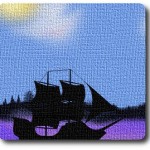 Genealogy beginners looking for immigrant ancestors should head straight over and bookmark The Immigrant Ships Transcribers Guild (ISTG) website.
Genealogy beginners looking for immigrant ancestors should head straight over and bookmark The Immigrant Ships Transcribers Guild (ISTG) website.
The ISTG is a volunteer group that has been working since 1998 to transcribe ships lists on a global scale and publish them on the internet. In the years since its inception, the ISTG website has grown to include volumes of passenger manifests.
The scale of the site may make navigating it a little intimidating to the novice family history hunter. A short tutorial will help make things a little easier.
How to Search the ISTG
Step one:
Locate the search box on the upper left hand corner of the opening page and enter the surname you are researching. This should move you forward to a page with a long list of matches.
Step Two:
On the upper right hand corner of the page, you will find an option for advanced searches…click the option.
The advanced search will give you four text boxes
1. All – will return pages that include all of the terms entered
2. Phrase – will return pages matching the exact phrase
3. Any – will return pages that match any of the terms – in no specific order
4. None – includes other selected items and must be used in tandem with other fields
For example, entering “Alexander McCallum” into the “All” field returns ships named Alexander as well as passengers surnamed Alexander and McCallum.
The same search entered in the “Phrase” field returns only passengers named Alexander McCallum.
In the Any field these search terms return the same results as entering into the “All” field. It is good to use the “None” field in tandem as you can enter terms you do not want matched in order to narrow your search.
Once you are comfortable using the search function you will be free to search some of this sites great free resources from Jacobite rebellion ships to New York arrivals.
One great feature of this site that you will not want to miss is the ISTG compass, which is a tool to simplify your searches by breaking down resources into consumable information bites.
The ISTG is another site that relies heavily on volunteer transcribers, if you would like to help check out their Guild Application for more information.
Make sure you are prepared for your visit to The Immigrant Ships Transcribers Guild with Genealogy Beginners Family Tree Starter Kit, available with your 30-day free membership.
Research Americas Earliest Immigrants FREE
July 30, 2012 by ramona
Filed under Articles, Genealogy Research Resources, Latest News, Sharing Genealogy Information
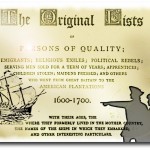 Family Tree fanatics wishing to research the earliest immigrants to the Americas are in for a real treat with this fantastic book published in 1874 and titled The Original Lists.
Family Tree fanatics wishing to research the earliest immigrants to the Americas are in for a real treat with this fantastic book published in 1874 and titled The Original Lists.
The book will be of great interest to any family history seekers whose family came to the Americas during 1600-1700.
Its contents are comprised of the original lists of:
- Persons of quality
- Emigrants
- Religious exiles
- Political rebels
- Serving men sold for a term of years
- Apprentices
- Children stolen
- Maidens pressed; and others who went from Great Britain to the American Plantations, 1600-1700
It is exciting to note that within the pages of this fantastic resource is a list of early immigrant passengers that came over on the Mayflower (1620), The Fortune (1621), The Anne and Little James(1623).
Along with this bounty of genealogical booty, the book lists the ages of individuals, the ships they embarked on and various other interesting details such as the following:
“The bill of mortality of the said rebells that dyed since they were reced on board and were thrown overboard out of the said ship are these uiz. December the Sixteenth Thomas Venner, Seventeenth W* Guppy, Eighteenth John Willis, Nineteenth Edward Venn, the same day Philip Cox one and Twentieth Robert Vawter, Five and Twentieth Wm Greenway, January the first Peter Bird, Witnessed by the commander, March and officers’ of the said ship this Eigth day of January 1685.”
John May
John Penn
John Maddison
Gabriel Whithorn
Malcum Fraser
One very interesting chapter is “Entries relating to America taken from the Indexes to the Patent Rolls, commencing 4 James I 1606 and ending 14 William III 1702.” The entries in this section are very intriguing and include entries such as:
“Grant of Incorporation, by the name of the treasurer and Company of Adventurers and Planters in the city of London and Bristol, For the Colony and Plantation in Newfoundland.”
Taken from manuscripts held in the State Department; Her Majesty’s Public Record Office, England, this incredible resource is filled from cover to cover with fascinating histories of the earliest pioneers to the Americas.
Before you start flipping through the pages, remember to download your Family Tree Charts and Research Tracking forms available with your 30- Day free trial to Genealogy Beginner.
Read The Original Lists at Internet Archives
Obama Descendant of First Slave?
July 29, 2012 by ramona
Filed under Articles, Latest News
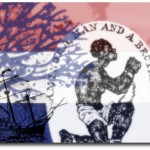 Since first starting out on the election trail, President Barack Obama’s family history has been a subject of great interest. In this week’s news, Obama’s family tree has become even more noteworthy as genealogist claim to trace his descent from the American Colonies first documented slave.
Since first starting out on the election trail, President Barack Obama’s family history has been a subject of great interest. In this week’s news, Obama’s family tree has become even more noteworthy as genealogist claim to trace his descent from the American Colonies first documented slave.
The Roots of Slavery
The commencement of slavery in the US began in Virginia with the arrival of 20 Africans aboard a Dutch Man – o – War. At its inception, slavery was not legally recognized and the status of Africans was documented as indentured servants. This can be seen in the colonial court records of Virginia in a document dating from 1625 that notes “Antonio the Negro” as a servant.
In those early times, there was no distinction between black and white indentured servants. As a result, it was common for black and white indentured servants in addition to “Poor whites” to associate closely, working side by side, becoming friends and often intermarrying.
John Punch
In the year 1640 one black and two white indentured servants ran away from the Virginia plantation where they worked. Eventually, the tree escapees were captured and returned to the plantation. Upon their return, the Virginia General Court passed a sentence of four additional years of servitude onto the white runaways while African John Punch received a punishment of life in servitude, making him the first (documented) black slave in American history.
The Ancestral Connection
Genealogist conducting research for Ancestry.com claim to have traced the descent of the American Commander and Chief to Punch; surprisingly through Obama’s maternal white line. The president’s mother, Stanley Ann Dunham is reported to have a line of descent to white landowners in the Virginia colonies.
The genealogists contend that it is through a Dunham woman and John Punch that President Obama’s line descends. If their findings are accurate, Punch is Obama’s 11th great grandfather.
If this is true, there is a certain poetic justice in that a descendant of the first black slave was to become the first black president.
Newest FREE Family Tree Resources
July 21, 2012 by ramona
Filed under Articles, Family Search The LDS, Genealogy Records 101, Latest News
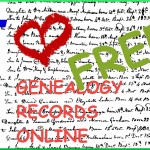 If you have been waiting for new genealogy resources to become available online, your wait may be over. The month of July 2012 saw some great additions to genealogy resources by FamilySearch.
If you have been waiting for new genealogy resources to become available online, your wait may be over. The month of July 2012 saw some great additions to genealogy resources by FamilySearch.
The new additions span the globe from the USA to Asia…some dating from the 1400s.
Keep reading for a complete list of the July’s new records:
| Record For | Record Type | Date Added |
|
United States |
||
| Alabama, Madison County | Chancery and Circuit Court Records, 1847-1950 | 10 Jul 2012 |
| California, San Mateo | County Records, 1856-1991 | 17 Jul 2012 |
| Indiana | Marriages, 1811-1959 | 7 Jul 2012 |
| Maine | State Archive Collections, 1790-1966 | 10 Jul 2012 |
| Missouri, Jackson | County Voter Registration Records, 1928-1956 | 17 Jul 2012 |
| Nevada | County Birth and Death Records, 1871-1992 | 10 Jul 2012 |
| New York, Orange County | Probate records | 10 Jul 2012 |
| Oregon | Douglas County Records, 1852-1952 | 10 Jul 2012 |
| Texas | Deaths, 1977-1986 | 19 Jul 2012 |
| United States | Census, 1940 | 6 Jul 2012 |
| United States | Social Security Death Index | 2 Jul 2012 |
| United States | Civil War Widows and Other Dependents Pension Files | 7 Jul 2012 |
| United States | National Homes for Disabled Volunteer Soldiers, 1866-1938 | 10 Jul 2012 |
| Utah | County Marriages, 1887-1937 | 6 Jul 2012 |
| Utah | Marriages 1887-1966 | 16 Jul 2012 |
|
Canada |
||
| Canada | Census, 1916 | 3 Jul 2012 |
| Nova Scotia | Vital Records, 1763-1957 | 3 Jul 2012 |
| Ontario | Marriages, 1869-1927 | 6 Jul 2012 |
| Quebec | Notarial Records, 1800-1900 | 17 Jul 2012 |
| Saskatchewan | Probate Estate Files 1887-1931 | 6 Jul 2012 |
|
Great Britain |
||
| Scotland | Census, 1881 | 2 Jul 2012 |
| Scotland | Census, 1891 | 2 Jul 2012 |
|
Western Europe |
||
| Italy, L’Aquila, Camarda, Parrocchia di San Giovanni Battista | Catholic Church Records, 1606-1941 | 3 Jul 2012 |
| Italy, Palermo, Diocesi di Monreale | Catholic Church Records, 1531-1998 | 3 Jul 2012 |
| Italy, Trento, Diocesi di Trento, Catholic | Catholic Church Records, 1548-1937 | 21 Jul 2012 |
| Italy, Vicenza, Casoni, Parocchia di San Rocco, | Catholic Church Records, 1597-1937 | 3 Jul 2012 |
| Spain, Province of Sevilla | Municipal Records, 1903-1918 | 10 Jul 2012 |
| Spain, Province of Tarragona | Records of Widows and Orphans of Spanish Officials, 1860-1960 | 10 Jul 2012 |
|
Eastern Europe |
||
| Czech Republic | Censuses, 1843-1921 | 10 Jul 2012 |
| Czech Republic | Land Records, 1450-1889 | 10 Jul 2012 |
| Poland | Roman Catholic Church Books, | 16 Jul 2012 |
| Slovakia | Church and Synagogue Books, 1592-1910 | 19 Jul 2012 |
|
South America |
||
| Chile, Santiago | Collection of Genealogies, 1500-1980 | 11 Jul 2012 |
| Chile, Santiago | Cementerio General, 1821-2011 | 11 Jul 2012 |
| Peru, Lima | Civil Registration, 1874-1996 | 11 Jul 2012 |
| Peru, La Libertad | Civil Registration, 1903-1997 | 2 Jul 2012 |
| Dominican Republic | Civil Registration, 1801-2010 | 11 Jul 2012 |
| Ecuador | Catholic Church Records, 1565-1996 | 2 Jul 2012 |
| Guatemala | Civil Registration, 1877-2008 | 3 Jul 2012 |
| Portugal, Braga | Catholic Church Records 1530-1911 | 11 Jul 2012 |
| Portugal, Castelo Branco | Catholic Church Records | 20 Jul 2012 |
| Portugal, Diocese of Lamego | Catholic Church Records, 1529-1916 | 11 Jul 2012 |
| Portugal, Diocese of Vila Real | Catholic Church Records, 1575-1975 | 11 Jul 2012 |
|
Asia |
||
| Korea | Collection of Genealogies, 1500-2009 | 10 Jul 2012 |
|
South Africa |
||
| South Africa | Free State Dutch Reformed Church Records, 1848-1956 | 19 Jul 2012 |
| South Africa | Orange Free State, Estate Files, 1951-2004 | 11 Jul 2012 |
| South Africa, Western Cape | Various Records | 10 Jul 2012 |
Before you tackle all of these new family history records and break your genealogy brick wall, remember to download your Research tracking forms and Family Tree Charts. Available with your 30-Day FREE TRIAL MEMBERSHIP to Genealogy Beginner
Pinning your Family Tree
July 14, 2012 by ramona
Filed under Articles, Family History, Latest News, Preserving Your Family Tree
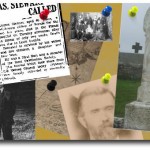 Well it certainly did not take long for family tree fanatics to make use of social media “pinning” sites.
Well it certainly did not take long for family tree fanatics to make use of social media “pinning” sites.
If you are new to social media here is what you need to know about pinning. Pinning is a visual way of sharing your interests via a virtual pin board. You can create boards based on a singular theme such as genealogy, family tree, family history etc. Ultimately, what these sites do is share links through images. One way to think of it is as a visual bookmark.
Pinning for Genealogy
Pintrest
Pintrest can be used as a fantastic tool for organizing your genealogy, sharing resources and following others with like interests. The only catch is that in order to use Pintrest you must first receive an invitation.
Pinspire
If you do not have an invitation to Pintrest, you can try out its identical twin Pinspire. Pinspire is identical to pintrest with one exception…no invitation required.
If you want to check out more pinning sites, Minglewing, Piccsy and Storify are good places to start.
Uencounter.me
The newest kid on the pinning block is Uencounter.me a pinning site with a purpose. Uencounter.me is a mapping site that focuses on letting the user built a visual map of their family tree.
Building a visual map of your ancestors can be a very helpful tool for your family history research. However, the possibilities for information sharing with this type of application are easy to see.
Imagine the map as a resource for finding ancestors by location. Although other search sites come close, if you are not familiar with the geography of the area you are searching… it is easy to become confused and miss something.
For example:
My line of McCallum’s hail from Lanarkshire Scotland can be found in the census at Firth, Carstairs and Carnwath. While that may not mean much on a data screen, having a visual of just how close those communities are, helps give some perspective to your search.
Using Uencounter.me
The process starts by bringing up the map and asking you to zoom into your area of interest. You can also pin a place by adding the address.
Drop down menus let you select:
- Type of Encounter: Genealogy,
- Dates to and from: a date range from the present to the year zero,
- People Here Are / were: ancestors
- This pin relates to: an ancestor
- Specifically: Birth, Marriage, Death, other
For those of you who want to pin live relatives do not worry as the site gives the option for a privacy setting on an individual basis. As you move forward to the next step you will get a pop up box that allows for notes, you can even add photos.
While Uencounter.me shows all the earmarks of a superior genealogy tool, a searchable name function would make this an invaluable free resource for genealogists everywhere.
Need to learn more about finding your ancestors through the geography of genealogy check out Genealogy Beginners lesson on Searching by Place. Available with your 30-day free trial membership.
Find a Grave: Free Family Tree Resource
July 5, 2012 by ramona
Filed under Articles, Genealogy Research Resources, General Tips, Latest News, Sharing Genealogy Information
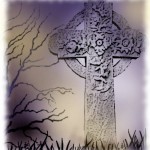 Find a Grave is a FREE genealogical resource that every genealogy beginner should visit and bookmark today.
Find a Grave is a FREE genealogical resource that every genealogy beginner should visit and bookmark today.
Founded in 1995 by Jim Tipton, a self-proclaimed nerd with the odd hobby of searching out and visiting the grave sites of the famous; Tipton’s goal in the creation of the site was to share his interest with like-minded others.
It was not long before he came to the realization that his hobby had great historical and genealogical significance.
What Does Find a Grave Contain?
Filled with memorials this virtual cemetery has listings for:
- North America (by province and state)
- South America
- Europe
- Asia
- Australia and Oceana
- Africa
Not to be forgotten is the “Famous Graves” section that has a comprehensive search field that allows for numerous search types.
It also has some fun categories such as:
Yearly Necrologies: listings of individuals who died during specific times
Posthumous Reunions: a page that lists movies and TV shows with cast members who have passed away. For example when I clicked on the TV show Star Trek, it listed 46 cast members (both guest starts and original crew). For each listing, it gave the date and place of birth and death, a biography that contained many details, cause of death, place of burial and special details.
Interesting Epitaphs: This category is self explanatory and indeed does contain some very interesting epitaphs.
Is it Worth My Time?
The best way to tackle this question is by giving it a test run. For this purpose, I will use three of my ancestors, one from the US, one from Canada and one from Scotland using the broadest search category…surname search.
- U. S. – Undseth: This search did not return any direct line ancestors, however there were a few cousins listed.
- Canada – McCallum: This search found several of my ancestors graves listed in three provinces.
- Scotland – Sinclair: This Search was the most successful and returned numerous family lines from the Orkney Islands.
Find a Grave is most definitely worth your time. In fact, you could easily spend hours and hours searching through the site for burial records to flesh out your family history.
How do I Join?
Joining is easy; simply fill out the online registration and you can immediately begin searching for your ancestors.
Find a Grave is a true genealogy treasure that allows you to not only search for your ancestors but also to contribute to the already huge database. Before you get started, be sure to download your complementary Cemetery Visit Tracking Form available with your free 30-day trail membership to Genealogy Beginner.
The Lost Irish: FREE Searchable Database
June 30, 2012 by ramona
Filed under Articles, Genealogy Research Resources, Latest News, Sharing Genealogy Information
 During the nineteenth and early twentieth century, Irish immigrants flocked to North America in droves. Leaving their homeland, due to poverty, political upheaval and famine; or simply to begin anew, they came in hopes of finding a better life.
During the nineteenth and early twentieth century, Irish immigrants flocked to North America in droves. Leaving their homeland, due to poverty, political upheaval and famine; or simply to begin anew, they came in hopes of finding a better life.
Leaving family and friends behind, their only mode of communication with loved ones was by letter. However, the international postal system was just developing and many immigrants lost touch with the folk back home. As a result, many new immigrants were lost to their relatives who remained in Ireland.
Missing Friends
October 1831 marked the birth of a new feature in the Boston Pilot newspaper when an advertisement seeking a Patrick McDermott and his family was published. This advertisement began what later became known as the “Missing Friends” column. The column was an instant success, increasing the newspapers circulation both at home and on an international scale.
A Family Tree Resource
Lasting an amazing ninety years the column ran from 1831 to 1921 and helped countless people find those they had lost. For family history buffs this translates into an amazing FREE resource for finding Irish ancestors. This genealogical treasure contains 40,268 records with text for every advertisement that was placed in the paper.
While the information included varies, it is possible to find some informative facts such as:
- county and parish of birth
- date they left Ireland
- expected port of arrival
- occupation
Using the Database
Although the database has a simple search, the advanced search function allows a great deal of flexibility.
MISSING PERSON’S INFORMATION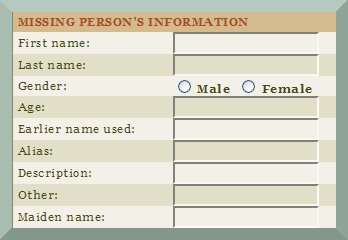 |
Using this search box, I entered the name Patrick O’Brian that returned 452 results. The information returned included:Home County: CorkTownland: Ballydunigan Nr. Bear HavenDeparture date: 1859Port of Departure: England, Liverpool Port of Arrival: MA, Boston |
| Additionally there was a description of the ad placed for him:Any Info Alive Or Dead. Other: Last May (05/65) He Resided W/His Si = Margaret O Brien For About A Mo.; He + His Br. = Denis Started To Mi, Lake Superior + Lived W/Fa + Mo For 6 Yrs; He Got M. About 2 Yrs Ago; Came To Visit His Mo. A Yr Ago Last 4-Jul To Mn Coppermines, Antaugon Co. | |
SEEKING PERSON’S INFORMATION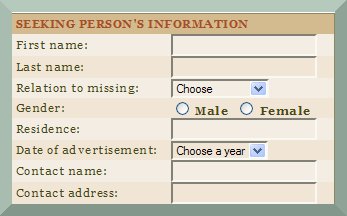 |
The above search also returned the data for the person seeking Mr. O’Brien.Name: Catherine O BrienRelation to missing: MotherGender: FemaleResidence: OH, Youngstown, Mahoning CountyDate of advertisement:08-25-1866 |
POINT OF ORIGIN INFORMATION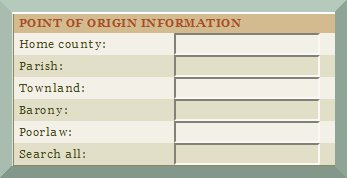 |
The advanced search also lets you search for a person by point of origin.For this search, I used Dublin as my point of origin, which only returned five results. |
WORK HISTORY |
If you know your ancestors trade, searching by occupation can give you a wide field of reference.I tried looking for:
|
LOCATION AFTER ARRIVAL |
As many American immigrants first came to North America through Canadian ports, I tried a search for Nova Scotia (A common port of entry for many U.S. immigrants). This search returned 26 results. Under the results was listed Patrick O Donnell, a Shoemaker who after arriving in Nova Scotia travelled to Mo, St. Louis (1859) and ended up in LA, New Orleans |
| The description for Mr. O Donnell reads.M. in Nova Scotia, Halifax (1857); His Wi. = Bridget O Donnell (Borve) in Canada, Quebec Is Anxious To Hear Some Tidings Of Him. Other: Last Heard He Worked at His Trade in LA, New Orleans; At The Time He Left Ns, Halifax He Had A Npw. = John A. Hearns Studying at The Seminary Of Carondolet Nr. Mo, St. Louis | |
TRAVEL INFORMATION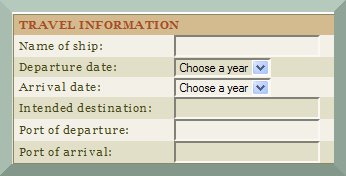 |
Searching by travel information allows you to simply select a year or the intended destination; very handy for researchers who are working with limited information. |
Key Word Search |
The last search field allows you to do a search of the entire database. You can search by name or by keyword. This is very handy should you have an ancestor with an alias or nickname.For example, a search under “Bessy” (short for Elizabeth) returned 55 results including the information for Elizabeth Daily AKA Bessy Daily. |
If you are ready to start searching for your missing ancestor, Boston College searchable database can be found at http://infowanted.bc.edu/.
Before you head off remember to get your Genealogy Beginner family tree charts and research tracking forms available with your 30-day free trial.
Donating Genealogical Records
June 28, 2012 by ramona
Filed under Articles, Latest News, Preserving Your Family Tree
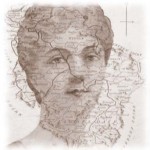 Have no doubt that your family tree research has value beyond the current generations of your own family.
Have no doubt that your family tree research has value beyond the current generations of your own family.
Donating your family history to a local historical or genealogy group is an excellent way to make certain all of your hard work is put to good use. Local Historical Societies and Genealogy groups have a stake in preserving your records for future generations.
How to Donate Your Family Tree
If you are considering donating your family tree research the best place to start is by contacting your local library. Your local library can help you identify the archives that are best geographically suited to receive your family’s story.
Generally, community groups are interested in local reference records. However, they may have ties to other groups with broader interests such as provincial or state archives.
When donating a rather widespread family tree it may be worth considering breaking it into smaller portions focusing on specific locations.
While it is normal in a large family tree to have a significant geographical spread with ancestors coming from all corners of the globe, a local group may have limited space. Therefore, it is reasonable that they may not want to house large documents unless they are completely location specific.
What to Include with Your Donation
Along with your family tree templates or pedigree charts, you should include either originals or copies of:
- Primary and secondary source documents
- Old photos
- Vital Records
- Newspaper clippings
- Maps
Donating your family tree data is one of the best ways of sharing your genealogy and contributing to the preservation of history in your community. Not only does it help preserve your research for future generations it may be key to helping another family history researcher to break down a brick wall.
However, before you donate be sure not to part with any original items you or other members of your family may want to keep. Lastly, make certain that all of your research conforms to The Big Five Genealogy Standards and Guidelines.
To learn more about genealogical standards sign up today for Genealogy Beginner’s 30-day free trial and receive Eight, Step-by-Step Weekly Lessons You Can Do At Your Own Pace. Starting with Lesson 1: Genealogy Standards And Guidelines.
Politics and Genealogy
June 20, 2012 by ramona
Filed under Articles, Latest News
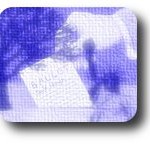 For most people genealogy is an enjoyable pastime, a pursuit of our heritage that helps to answer questions about why we are the way we are and how we got here.
For most people genealogy is an enjoyable pastime, a pursuit of our heritage that helps to answer questions about why we are the way we are and how we got here.
However, when it comes to politics and the genealogies of politicians it seems the stakes of knowing your line of decent are a little higher.
Political Family Trees and the Media
The spin that is put on the importance of a politician’s family tree sometimes defies reason. Certainly, it is understandable that the personal history of political candidates should have some bearing. After all the voting public has a right to know just who they are placing in a position of leadership.
Yet it seems curious that the cultural history or ethnicity of a perspective leader’s ancestors should create such media buzz, much less hold sway with the voting public.
Family History Headlines
From the time 35th President of the United States, John F. Kennedy’s Irish decent came into the
spotlight in 1963; genealogy has played a role in politics. 

A great example of this type of speculative Genealogy-gone-wild is the media frenzy surrounding President Barak Obama’s family history. During his campaign and following his 2008 election, countless stories of the president’s ancestors made it onto the pages of distinguished publications, such as the New York Times.
More recently, the news has been filled with a different type of genealogy story and controversy is at the heart of it with genealogists coming out of the woodwork to contest the family tree claims of political hopefuls.
The latest political family tree to come under scrutiny is that of senatorial candidate Elizabeth Warren whose claim to Native American ancestry is being challenged by the Cherokee Nation, the United Keetoowah Band of Cherokee Indians, and the Eastern Band of Cherokee Indians along with Cherokee genealogist Twila Barnes.

Barnes know for her genealogy blog “Polly’s Granddaughter” is a notorious “Wannabe Hunter” who strongly discourages any and all from making claims to Cherokee heritage without first producing the documentation to prove it.
It seems that genealogy and politics has clearly developed a love hate relationship and while it is, being determined if “politics is in the blood”; votes may hang in the balance.
Genealogy: Getting to Know Your Ancestors
June 14, 2012 by ramona
Filed under Archives, Family History, Genealogy groups, societies and organizations, Latest News
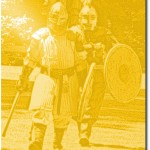 The Merriam Webster Dictionary gives a definition of genealogy as:
The Merriam Webster Dictionary gives a definition of genealogy as:
- an account of the descent of a person, family, or group from an ancestor or from older forms
- the study of family pedigrees
Strictly speaking, this is true; it is certainly a good definition of the process and an accurate descriptor of the intent with which genealogy is first approached. However, to those of us who have spent any length of time on this addictive hobby, the study of our ancestors begins to take on new meaning.
It is not long after family tree research begins that the dry definitions become inadequate. As we work our way through record after record, learning piecemeal the details of our ancestors lives we begin to feel we are getting to know them as individuals.
For some, the genealogical aspects of family history research are not enough. We want to get to know our forefathers on a deeper level. Become more familiar with their day-to-day lives.
If you count yourself among those wishing for a deeper understanding of your generations past, there are a number of activities you can participate in; activities that will allow you to experience your family history in a very real way.
Recreationists
Pick almost any period in history and you will find a group of people actively recreating the era. Living history groups include the activities, dress and tools of the eras they portray to give participants the sense of stepping back through time. Recreationists are not re-enactors; they are not scripted nor are they involved in recreating specific events. Member’s interests can include clothing styles, pastimes, cookery and artisanship, everything that would help create a feeling of every day life in bygone days. It is not at all surprising that among their ranks you find many genealogists and family historians.
Living History Groups
From late 20th century groups like “The 20th Century Revisited” A UK based group recreating scenes and events from various parts of the later 20th Century including WW2 resistance, and 1970 British Army of the Rhine (BAOR) or “Paper Dolls” An international group made up of female members who portray military and civilian life during World War Two. From hometown sweethearts, Women’s Land Army, French Resistance, American Red Cross, Women’s Army Corps. These groups offer an opportunity to learn what it was like for ancestors who lived during the great wars; both on and off the battlefield.
If you are more interested in the events of the 19th century The Living History Society of Minnesota members can attend workshops and participate in activities designed to increase their knowledge of mid 19th century life. For those whose Gr,Gr,Gr, Grandfathers heeded the familiar call of “Go West young Man” the Mojave Muleskinners have several branches across the US, Canada and the UK where you can immerse yourself and learn about life in the old west.
If you can trace your family tree to medieval times, a living history group from the Middle Ages may be more suiting. The Society for Creative Anachronism (SCA) is an international organization with over 30,000 members residing in countries around the world. One of the best things about this group is that you will find a mix of cultures from Viking to Italian to Middle Eastern. Members attend events such as tournaments, royal courts, feasts, dancing, various classes, workshops and more. The SCA is a group that lets you explore all of the European lines in your family tree.
If you want to know more about how living history groups can help enrich your genealogy and family history or how to find a group near you, just post a question to the Genealogy in General board on the Genealogy Beginner forums.
